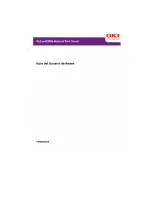
C
HAPTER
4 -
Troubleshooting and Software Maintenance
Software Maintenance
DS2000-TS Administrator’s Guide
4 - 5
4.4
S
OFTWARE
M
AINTENANCE
To discuss the software maintenance tasks it is important that the user understand how the system operates.
A description of the software files is also required. For descriptions of the files stored on the system and
restarting methods refer to Appendix C, “System Functions” before continuing.
The system software resides in Flash memory on the
D
YNA
S
TAR
2000
. The system, as received from the
factory, will include Download.bin and if the system has been in operation, then the SRAM1 and SRAM2
files will also be present. The SRAM files will appear after configurations are made in the unit. The
Download.bin file is the decompressed operational software loaded on the system at the factory. The SRAM
files are copies of memory that contain the current and previous configurations. The SRAM acts as a
temporary notepad to write system changes. When a
<CTRL-W>
Flash save operation is performed, the
system copies the current SRAM to Flash thereby changing the active configuration of the
DS2000-TS
. The
other SRAM contains a copy of the last configuration. In this way the SRAMs maintain copies of both the
current and last configurations. As an example, a user on a
DS2000-TS
makes changes to the configuration
without saving the changes to Flash. These changes are resident on one of the SRAMs, for this example let
us assume SRAM1. Warm restarting the
DS2000-TS
flushes SRAM1, and SRAM2 becomes the active
notepad. The changes made and not saved to Flash are lost, and the SRAM2 now contains the current
configuration information for the system.
The Download.bin file, which is the operational software, will also have a version number associated with it
and shown in the Directory Management menu. The version will also have a Build number in parenthesis,
such as (RC47), this designates the numerical sequence of the file creation, therefore the higher the build
number the newer the software within each version. There can be up to two Download.bin files on the
system at any one time. Attempting to add a new Download.bin file will not be allowed by the system. The
system renames the software load saved to the system to DOWNLOAD.BIN. The software file loaded is
named alfload.bin and when saved to the system the system renames it DOWNLOAD.BIN.
The cnfgload.cmp file is a compressed file containing the configuration data from the
DS2000-TS
. This file
is created to maintain a backup of the configured system should it become necessary to restore this
configuration on a replacement system and also to reinitialize a system to and maintain the desired
configuration. The reinitialize restart type will only be present (shown to the user) if a cnfgload.cmp file is
present on the system. It should be observed that there is no information shown to the user about when or
what version of software the cnfgload.cmp file was created under. The cnfgload.cmp file must be generated
by the user by issuing a GET command, CHECK THISusing TFTP (Trivial File Transfer Protocol) or FTP
(File Transfer Protocol), to the
D
YNA
S
TAR
2000
which then creates the file. When the
DS2000-TS
receives
the GET cnfgload.cmp command it creates the file and sends it to the requestor, but does not store it on the
system. This file is the complete configuration of the system as entered by the user. To place the
cnfgload.cmp configuration on the system the user must place the file on the system using either the
appropriate TFTP PUT or FTP PUT command. To utilize the cnfgload.cmp configuration the user Boots the
system using the reinitialize command. During the Reinitialize Boot, the system sees the cnfgload.cmp file
in Flash and uses it to rebuild the configuration data. Refer to the release notes on any software upgrade to
ensure that the configuration data is portable to the newer version. There are two methods for transferring
files to the
D
YNA
S
TAR
2000
using either TFTP or FTP commands. Use whichever method is appropriate for
the network design.
The following sections describe the steps necessary to:
•
Use FTP commands and syntax, definitions
•
Use TFTP commands and syntax, definitions
•
Use FTP/TFTP commands to create and download the cnfgload.cmp file
•
Use FTP/TFTP commands to save the cnfgload.cmp file to the
DS2000-TS
Flash memory
•
Use FTP/TFTP commands to load a new software build on the
DS2000-TS
•
Reinitializing the system using a new software build
















































